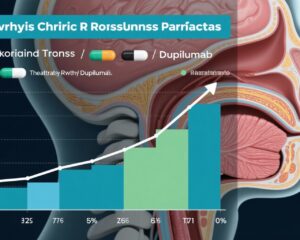Highlights
- A global meta-analysis encompassing 174 studies from 51 countries found that 42.1% of primary care prescriptions include antibiotics.
- Inappropriate antibiotic prescribing is prevalent, constituting 57.6% of all antibiotic prescriptions in primary care.
- Higher antibiotic prescribing rates are observed in lower-middle-income and low-income countries, with rural areas showing greater prevalence than urban areas.
- No significant reduction in antibiotic prescribing was observed over the past two decades, underscoring the need to re-evaluate antimicrobial stewardship strategies globally.
Background
Antibiotic resistance is a pressing global public health threat exacerbated by inappropriate antibiotic use. Primary care, as the entry point to most healthcare systems, plays a pivotal role in antibiotic consumption. Despite recognition of this, comprehensive global estimates of antibiotic prescribing in primary care settings have been lacking, which hampers targeted antimicrobial stewardship efforts. This knowledge gap motivated the first extensive systematic review and meta-analysis led by researchers from Huazhong University of Science and Technology, synthesizing data collected between 2000 and 2023 to quantify global antibiotic prescribing prevalence and identify key associated factors.
Key Content
Scope and Methodology of the Meta-Analysis
The review analyzed data from 174 studies spanning 51 countries, with 69 studies originating from high-income countries (HICs) and the remainder from low- and middle-income countries (LMICs). Data included prescription records from primary care outpatient settings, enabling pooled prevalence estimates of antibiotic prescribing and assessments of appropriateness. Statistical synthesis employed random-effects models and meta-regression to explore heterogeneity and factors associated with prescribing patterns.
Prevalence of Antibiotic Prescribing by Income and Region
The overall pooled prevalence of antibiotic prescriptions in primary care was 42.1% (95% CI, 39.2%–45.1%). Notably, LMICs exhibited significantly higher prescribing rates: 54.0% (95% CI, 48.7%–59.2%) in lower-middle-income and 49.1% (95% CI, 34.0%–64.3%) in low-income countries compared to HICs. Regionally, South Asia (54%), the Middle East and North Africa (46.7%), and sub-Saharan Africa (57.2%) reported notably elevated prescribing. Rural areas showed greater antibiotic use (51.6%) than urban areas (48.0%).
Inappropriate Antibiotic Prescribing
Alarmingly, the pooled estimate of inappropriate antibiotic prescriptions was 57.6%, reflecting widespread non-adherence to clinical guidelines and antimicrobial stewardship principles. The study discerned no significant temporal decline over two decades, suggesting stagnation in optimizing antibiotic use despite global awareness efforts.
Factors Associated with Antibiotic Prescribing
Among 37 studies investigating predictors, higher patient educational levels were inversely associated with antibiotic prescribing (OR 0.76; 95% CI, 0.71–0.82). No other patient-level or system-level factors showed consistent associations, highlighting complex multifactorial determinants of prescribing behavior.
Implications for Antimicrobial Stewardship
The data underscore a critical need to strengthen antimicrobial stewardship in primary care worldwide, especially in LMICs and rural contexts where prescribing is disproportionately high. The persistent high rates of inappropriate prescribing call for urgent policy revision and tailored interventions. The authors advocate for future research to elucidate the feasibility and effectiveness of stewardship models contextualized by regional and socioeconomic factors.
Expert Commentary
This landmark meta-analysis provides invaluable comprehensive evidence on global antibiotic prescribing patterns in primary care—a known epicenter of antimicrobial misuse. The high prevalence of prescriptions and inappropriate use amplifies concerns regarding accelerating antibiotic resistance development, threatening effective infection management.
Key strengths of the study include its extensive global coverage and rigorous meta-analytic approach, capturing variation across income groups and regions. However, limitations include heterogeneity in definitions of inappropriate prescribing across studies, potential publication bias, and reliance on observational data limiting causal inference.
Clinically, findings prompt critical reflection on current stewardship interventions, which have not demonstrably reduced prescribing over 20 years. Multifaceted strategies integrating provider education, patient awareness, regulatory policies, and improved diagnostic support are essential. The inverse association of patient education suggests empowerment and health literacy as potential levers to reduce excessive antibiotic demand.
Policy-wise, international collaboration and tailored stewardship programs adapted to resource-constrained environments are imperative. Digital health tools for real-time prescription monitoring and decision support may represent future innovations.
Conclusion
The first global systematic review and meta-analysis quantifying antibiotic prescriptions in primary care reveal a sobering prevalence of antibiotic use—42% of all prescriptions—and high proportions of inappropriate use exceeding 50%. These trends are particularly pronounced in LMICs and rural areas, with negligible improvement over two decades despite stewardship efforts.
These findings highlight a critical gap in global antimicrobial stewardship implementation and the urgent need for innovative, context-sensitive interventions to optimize antibiotic use, improve patient outcomes, and mitigate resistance development globally.
References
- Song Q, Li J, Zhou P, Chen R, Liu Z, Li H, Yin X. Worldwide antibiotic prescription practices in primary care and associated factors: a systematic review and meta-analysis. Am J Infect Control. 2025 Aug 16:S0196-6553(25)00521-8. doi: 10.1016/j.ajic.2025.08.009. Epub ahead of print. PMID: 40825457.



